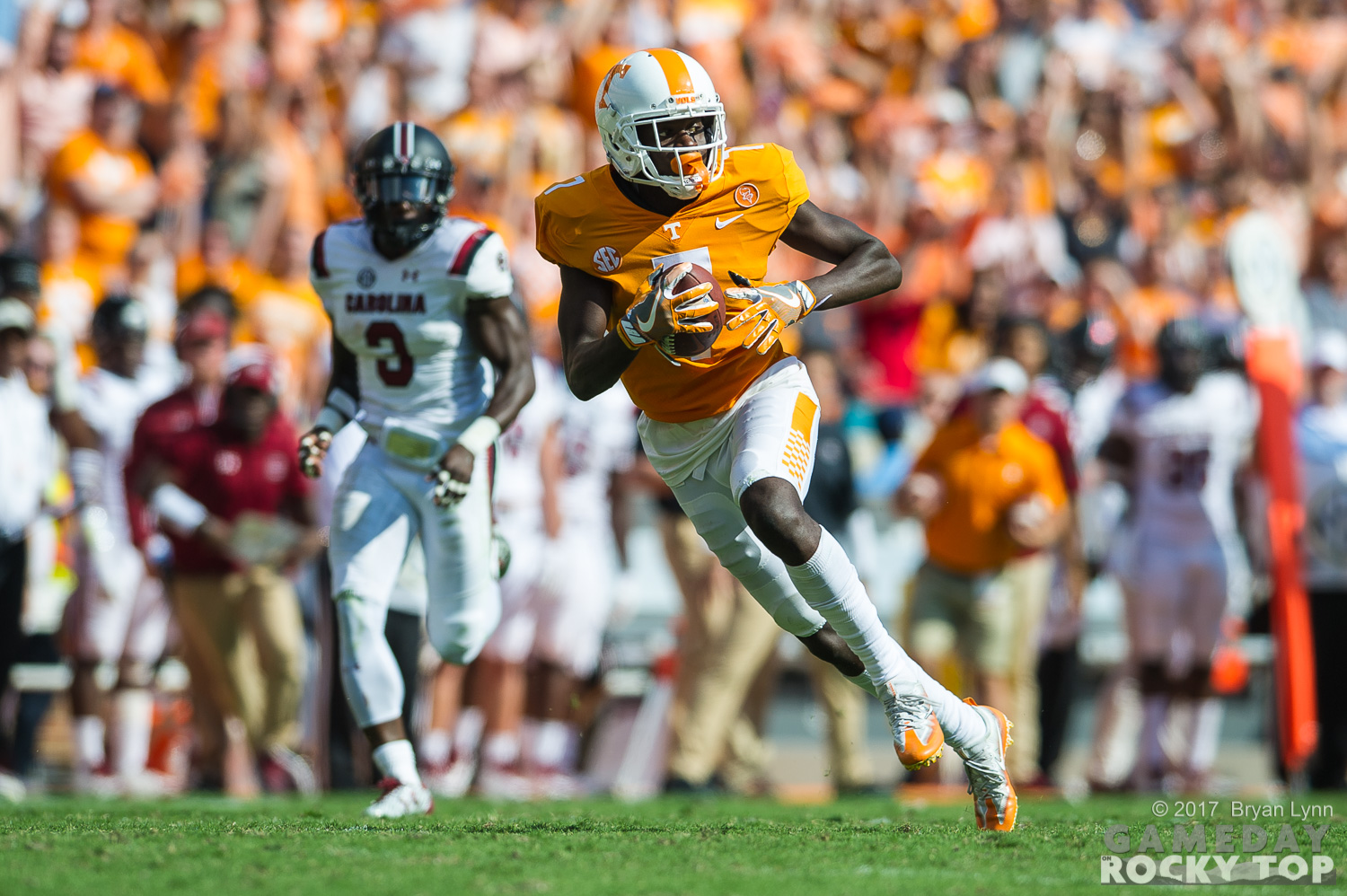The best highlights of 2016 belonged to Jauan Jennings, and the best highlights of 2017 belonged to Marquez Callaway. When building the case for Tennessee’s success in 2018, they’re a great place to start.
Who’s next?
#7: Wide Receiver Depth
The Butch Jones offense threw the ball to the running back more than any other in the SEC.
In 2015 Von Pearson was Tennessee’s leader in targets at 15.4%, the lowest rate for a number one option for any team in the conference. By contrast, the Vols targeted their running backs on 21% of passes, highest in the league. Alvin Kamara was on the receiving end of 12.6% of those, the highest for any back in the SEC.
Kamara’s number increased to 14.4% in 2016, even as Josh Malone and Jauan Jennings established themselves as the top two options at receiver. And last year it went up even more for John Kelly, getting a look on 15.8% of Tennessee’s passes (advanced stats from the always-awesome Football Study Hall).
What’s more, Tennessee tried to spread the ball around with tight ends as well. Backs and tight ends accounted for three of the Vols’ top six targets in 2015, three of the top five in 2016, and two of the top four last year. “Who is Tennessee’s number three receiver,” hasn’t mattered much during that span: Josh Smith had 12.4% of UT’s targets in 2015, 8.3% in 2016, and Josh Palmer was at 10.1% last year. Being Tennessee’s third option at receiver meant only nine catches for Palmer in 2017.
That will not be the case in Tyson Helton’s offense.
Last year USC’s four most-targeted players were all wide receivers, accounting for 67.1% of the balls Sam Darnold threw. 2015 was no different: top four targets all receivers, accounting for 65.9%. 2015 at Western Kentucky? Top four targets all receivers, accounting for 74%.
Jennings, Callaway, check. But who’s number three (and number four) is getting ready to matter a whole lot more.
Last year, Brandon Johnson was really number one. He was targeted on 18.5% of passes to lead the Vols, again a low number for a priority target. He was huge against UMass (7 for 123) and Vanderbilt (6 for 107), and was often a safety valve in an offense that needed a lot of that. If Jennings and Callaway return to health and form, he could be in for an even bigger year with less attention.
But Helton’s offense is a new lease on life for the entire receiving corps. And if history holds, one of Josh Palmer, Alontae Taylor, Latrell Williams, Tyler Byrd, Jordan Murphy, or Jacquez Jones is going to have a big year. And perhaps the best news is the entire position group contains zero seniors. What starts this fall could build into a much more dangerous passing game in 2019, especially if Guarantano wins the job.
10 Questions for 2018
10. Which backups on the defensive line will be starters in 2019?
09. Can special teams make the difference in a coach’s first year?
08. What do we know about Tyson Helton’s offense from his time at USC?

